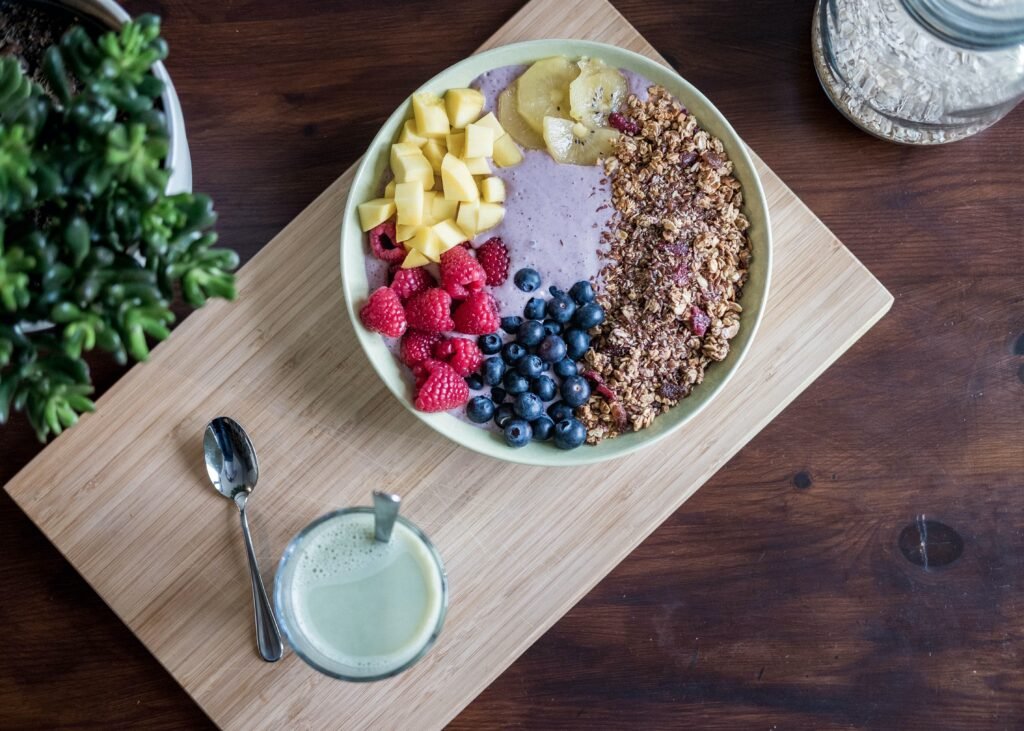If you’re someone who has recently been advised to follow a low-oxalate diet, you might be wondering where to start and how exactly to go about it. Well, look no further! This article aims to provide you with an easy-to-understand guide on how to successfully follow a low-oxalate diet. By breaking down the basics and offering practical tips and recommendations, you’ll be well-equipped to make informed dietary choices and navigate this specific nutritional requirement with confidence. So, let’s dive in and explore how you can effectively incorporate a low-oxalate diet into your lifestyle!

This image is property of images.unsplash.com.
Understanding Oxalates
What are oxalates?
Oxalates are natural compounds found in many different types of foods. They are naturally present in plants and are especially concentrated in certain fruits, vegetables, grains, and legumes. Oxalates can also be produced by the human body as a byproduct of metabolism. While oxalates are not harmful in small amounts, they can become problematic for some individuals when consumed in large quantities or if the body is unable to properly metabolize them.
Why is a low-oxalate diet important?
For individuals who are prone to developing kidney stones or have certain medical conditions, following a low-oxalate diet can be crucial. Oxalates can combine with calcium to form crystals, which can then develop into kidney stones. By reducing the intake of oxalate-rich foods, it is possible to lower the risk of kidney stone formation and manage related conditions. Additionally, some people may experience digestive symptoms or other health issues when consuming high amounts of oxalates, making a low-oxalate diet beneficial for their overall well-being.
Foods high in oxalates
A wide variety of foods contain oxalates, but there are certain types that tend to have higher levels. Common examples of high-oxalate foods include spinach, rhubarb, beets, Swiss chard, almonds, peanuts, soy products, wheat bran, and quinoa. Additionally, some fruits such as raspberries, strawberries, and blackberries can also be high in oxalates. It is important to note that cooking or processing certain foods can reduce their oxalate content, but many high-oxalate foods should still be consumed in moderation or avoided altogether on a low-oxalate diet.
Determining Oxalate Levels
Consulting a healthcare professional
Before making any significant dietary changes, it is recommended to consult with a healthcare professional, such as a registered dietitian or a doctor specializing in nutrition. They can assess your specific medical history, dietary needs, and any underlying conditions to determine if a low-oxalate diet is appropriate for you. They can also provide personalized guidance on how to effectively implement the diet while ensuring optimal nutrition.
Oxalate testing options
If you have a specific health condition related to oxalate metabolism or kidney stone formation, your healthcare professional may recommend getting oxalate testing done. This involves collecting a urine sample to measure the levels of oxalate excreted by your body. The test results can help determine the severity of your condition and guide dietary modifications. However, it is important to note that oxalate testing alone may not be sufficient to diagnose or manage all conditions associated with oxalates, so it should be used in conjunction with professional guidance.
Interpreting oxalate levels
Interpreting oxalate levels can be complex and requires the expertise of a healthcare professional. They will take into consideration your personal medical history and condition, as well as the results of any oxalate testing, to provide guidance on the appropriate levels of oxalates for your individual needs. It is important to follow their recommendations and regularly monitor your oxalate levels, especially if you have a history of kidney stones or other related conditions.

This image is property of images.unsplash.com.
Creating a Low-Oxalate Meal Plan
Identifying high-oxalate foods to avoid
To create a low-oxalate meal plan, it is important to identify and avoid high-oxalate foods. This involves familiarizing yourself with the oxalate content of various foods and ingredients. Keep in mind that not all high-oxalate foods need to be completely eliminated from your diet, but rather consumed in moderation. By focusing on foods that are lower in oxalates, you can still enjoy a diverse and balanced diet while minimizing the risk of excessive oxalate intake.
Choosing low-oxalate alternatives
In order to replace high-oxalate foods in your diet, it is important to identify suitable low-oxalate alternatives. For example, if you have been consuming spinach as a source of leafy greens, you could consider replacing it with kale or collard greens, which have lower oxalate levels. Similarly, if you have been relying on almonds or peanuts for protein, you could explore other nut or seed options such as cashews or sunflower seeds. Low-oxalate alternatives can help ensure that you still obtain the necessary nutrients while adhering to a low-oxalate diet.
Balancing other nutritional needs
While a low-oxalate diet may require certain restrictions, it is crucial to maintain a balanced nutritional intake. Make sure to include a variety of other nutrient-dense foods in your meal plan, such as lean proteins, healthy fats, whole grains, and a wide range of fruits and vegetables. This will help ensure that you are getting all the necessary vitamins, minerals, and macronutrients your body needs to function properly. Consider working with a registered dietitian to help you devise a meal plan that meets your individual nutritional needs while adhering to a low-oxalate diet.
Avoiding High-Oxalate Foods
List of vegetables high in oxalates
- Spinach
- Swiss chard
- Beet greens
- Rhubarb
- Okra
List of fruits high in oxalates
- Raspberries
- Strawberries
- Blackberries
- Kiwi
- Oranges
List of grains high in oxalates
- Quinoa
- Buckwheat
- Amaranth
- Wild rice
- Millet
List of legumes high in oxalates
- Almonds
- Peanuts
- Soy products (tofu, soy milk, etc.)
- Black beans
- Kidney beans

This image is property of images.unsplash.com.
Opting for Low-Oxalate Alternatives
Low-oxalate vegetables
- Kale
- Collard greens
- Brussels sprouts
- Broccoli
- Cabbage
Low-oxalate fruits
- Apples
- Pears
- Grapes
- Peaches
- Melons
Low-oxalate grains
- Rice
- Oats
- Barley
- Corn
- Spelt
Low-oxalate legumes
- Lentils
- Chickpeas
- Navy beans
- Limabeans
- Pinto beans
Protein sources with lower oxalate levels
- Chicken
- Turkey
- Fish (salmon, cod, etc.)
- Eggs
- Dairy products (choose low-oxalate options if lactose intolerant)
Meal Planning Tips
Including variety in your diet
When following a low-oxalate diet, it is important to include a wide variety of foods to ensure you obtain a range of nutrients. Incorporate different types of fruits, vegetables, grains, and proteins to avoid monotony in your meals and maximize nutritional diversity. Experiment with new recipes and cooking methods to keep your meals interesting and enjoyable.
Cooking methods to reduce oxalate content
Certain cooking methods can help to reduce the oxalate content in foods. Boiling vegetables and then discarding the cooking water has been shown to significantly reduce oxalate levels. Additionally, steaming, roasting, or microwaving foods can also reduce oxalate content to some extent. However, keep in mind that cooking methods alone may not eliminate all oxalates, so it is still important to moderate your intake of high-oxalate foods.
Monitoring portion sizes
While incorporating low-oxalate alternatives is important, it is equally essential to be mindful of portion sizes. Even low-oxalate foods can contribute to excessive oxalate intake if consumed in large quantities. Use measuring cups or a kitchen scale to ensure you are consuming appropriate portions of foods, especially those that are higher in oxalates. This will help you maintain a balanced and controlled dietary oxalate intake.
Meal prepping for convenience
Meal prepping can be a helpful strategy when following a low-oxalate diet. By preparing meals and snacks in advance, you can ensure that you always have low-oxalate options readily available, even on busy days. Consider dedicating some time each week to batch-cook meals, chop vegetables, and portion out ingredients for quick and convenient meals throughout the week. This can save time and make it easier to adhere to your low-oxalate meal plan.
Ensuring Nutrient Sufficiency
Maintaining a balanced diet
When following a low-oxalate diet, it is essential to maintain a balanced and varied intake of nutrients. Ensure that your meals include a mix of lean proteins, healthy fats, complex carbohydrates, and a wide range of fruits and vegetables. Consider working with a registered dietitian to help you create a meal plan that meets your specific nutritional needs while adhering to the low-oxalate requirements.
Compensating for restricted food groups
Due to the restrictions imposed by a low-oxalate diet, it may be necessary to compensate for certain restricted food groups. For example, if you are avoiding high-oxalate grains, you may need to increase your intake of low-oxalate grains or alternative carbohydrate sources to meet your energy needs. Similarly, if you are lactose intolerant and need to limit dairy consumption, explore other calcium-rich foods or consider calcium supplements under the guidance of a healthcare professional.
Considering nutritional supplements
In some cases, it may be necessary to incorporate nutritional supplements into your low-oxalate diet. This is particularly important if you have certain medical conditions or restrictions that prevent you from obtaining adequate nutrients solely from food sources. Talk to a healthcare professional to determine if specific supplements, such as calcium, vitamin D, or others, are necessary to meet your nutritional needs while adhering to the low-oxalate diet.
Dealing with Other Dietary Restrictions
Addressing gluten intolerance
If you have gluten intolerance or celiac disease in addition to needing a low-oxalate diet, it is important to navigate both dietary restrictions simultaneously. Look for gluten-free grains that are also low in oxalates, such as rice, corn, or quinoa (in moderate amounts). Explore gluten-free recipes and products to ensure that you are incorporating a variety of flavors and textures into your diet while keeping it both low-oxalate and gluten-free.
Modifying for lactose intolerance
If you are lactose intolerant and need to restrict your lactose intake while following a low-oxalate diet, there are still plenty of options available. Many dairy products have low lactose content or are lactose-free, such as aged cheeses, lactose-free milk, and lactose-free yogurt. Alternatively, you can explore non-dairy alternatives such as almond milk, coconut milk, or soy milk (in moderation, due to their higher oxalate content).
Accommodating allergies or sensitivities
Individuals with allergies or sensitivities to specific foods may face additional challenges when following a low-oxalate diet. It is important to identify suitable alternatives and replacements for allergenic foods while ensuring that they are also low in oxalates. Consult with a dietitian or allergist to help you navigate these dietary challenges and develop safe and nutritious meal plans that meet your specific needs.
Seeking Professional Guidance
Working with a registered dietitian
When following a low-oxalate diet, it is highly beneficial to work with a registered dietitian who specializes in medical nutrition therapy. They can provide personalized guidance and support, taking into account your medical history, individual needs, and dietary preferences. A dietitian can help you create a sustainable low-oxalate meal plan that is both nutritionally balanced and enjoyable, making it easier to adhere to the diet long-term.
Getting personalized meal plans
A registered dietitian can provide personalized meal plans based on your specific nutritional needs and dietary restrictions. They have in-depth knowledge of low-oxalate food options, cooking methods, and nutritional requirements, allowing them to tailor meal plans that meet your needs and preferences while also considering any other medical conditions or dietary restrictions you may have. Personalized meal plans can provide structure, variety, and support as you navigate the low-oxalate lifestyle.
Utilizing medical support if necessary
In some cases, medical support beyond the expertise of a registered dietitian may be necessary, especially if you have underlying medical conditions related to oxalates or kidney stone formation. A specialized doctor or nephrologist may be able to provide additional guidance, medication, or treatment options to manage your condition effectively. It is important to collaborate with your healthcare team to determine the most appropriate course of action and ensure comprehensive care.
Adapting to the Low-Oxalate Lifestyle
Gradual transition for sustainable changes
Making significant dietary changes can be challenging, so it is often helpful to approach the low-oxalate lifestyle with a gradual transition. Start by gradually reducing your intake of high-oxalate foods and exploring low-oxalate alternatives. Allow yourself time to adjust to the new flavors and textures, and experiment with different recipes and cooking methods to find what works best for you. By making sustainable changes over time, you can enhance your chances of long-term success and adherence to the low-oxalate lifestyle.
Finding support and resources
Navigating a low-oxalate diet can feel overwhelming, but there are numerous resources available to support you along the way. Join online communities or support groups where you can connect with others following a similar diet and share tips and experiences. Utilize reputable websites, books, and cookbooks that provide information and recipes tailored to a low-oxalate lifestyle. Finding support and resources can help you stay motivated, encouraged, and informed throughout your journey.
Overcoming challenges and setbacks
Adhering to a low-oxalate lifestyle may present challenges or setbacks at times, but it’s important not to get discouraged. If you find yourself struggling, reach out to your healthcare professional or dietitian for support and guidance. They can help you troubleshoot any issues you may be experiencing and provide solutions to overcome hurdles. Remember that everyone’s journey is unique, and there may be adjustments and adaptations necessary along the way. Stay positive, seek assistance when needed, and keep your long-term health goals in mind.

